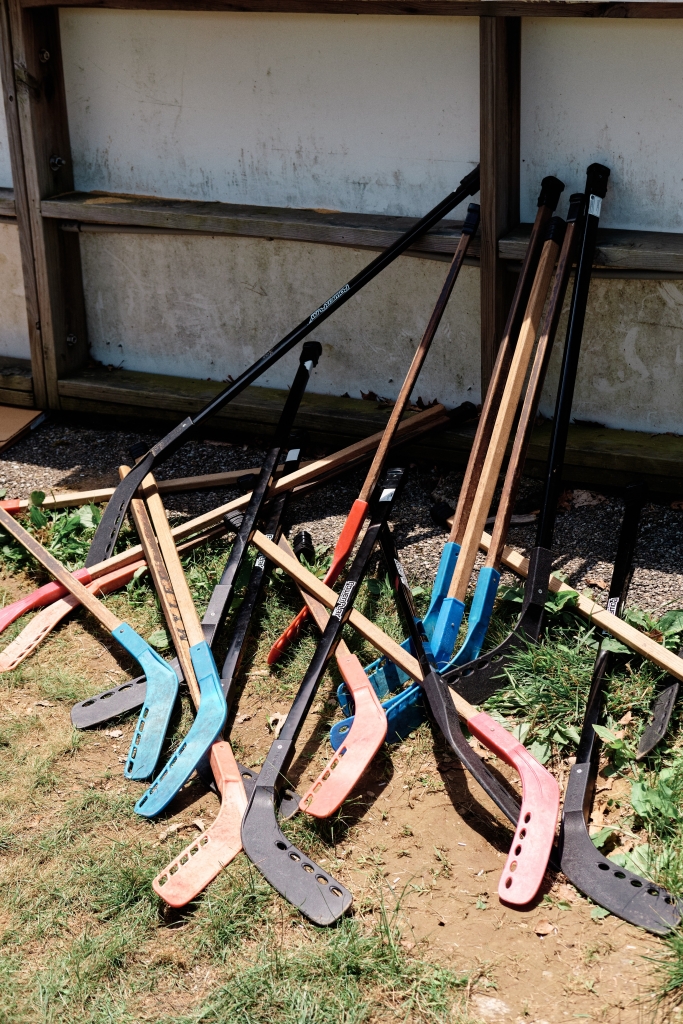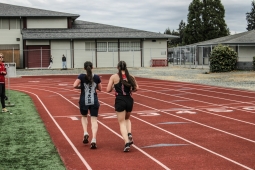6 Tips to Start Your PE Program on The Right Foot This Year

6 Tips to Start Your PE Program on The Right Foot This Year
This past August, I went to IKEA to buy new stuff for my office at school and I’m picking out random paint samples because for some reason I think I’m going to be painting my office? To wrap it up I’m procrastinating from the inevitable… going back to school.
This September is a big one. My husband and I have been on deferred salary since February 1st, 2022. So, I have been off for 6 months. I have had a wonderful life balance during this time and it has allowed me to really reflect on my programming as well. Having time to focus on travel, home, and family has allowed me to really hit the reset button to get back to what I love to do... TEACH. I will be teaching grade K-9 Physical Education this year.
Things I am looking forward to the most this fall are seeing the kids, reclaiming structure and routine to my day, eating a little better, and the best of all making lunches (Ha ha). On the first day of school, I love listening to the kids tell me what they did during the summer and it always surprises me the small little things that they did that are huge in their life. So this year I want to document it.
Tip #1 - Create Team Bitmoji’s
My team teaching partner, Jeremy Dunn and I will be making a “What did you do for Physical Activity this summer?” bulletin board. Jeremy is always up for anything I throw at him and is a great teaching partner. I even talked him into getting a bitmoji so we can have fun little pictures to put on our handouts and communication plans. The kids loved it!
Make your own Bitmoji following this link: https://www.bitmoji.com/
For Chrome: https://support.bitmoji.com/hc/en-us/articles/360001494066-Bitmoji-Chrome-Extension
Tip #2 - Create a Bulletin Board
The bulletin board is outside the gym so it is a perfect location to show it off to the school. We plan on asking the students in the principal’s welcome back message to bring in a photo or a picture that they drew. We will also ask the teachers/teacher assistants to email or bring in a photo. This year we have a lot of new staff members so it will be a great way to get to know each other and what people's interests are. The kids also love seeing things that their teachers and teacher assistants do outside of school. Please do not forget to make the TA’s feel like part of the team. They are so important in the classroom and they tend to get left out.
Our school board has two in-service days before the students come back to school. Having this opportunity to work with staff and see the new dynamic of the school team is so important. Over these two days, we have a chance to go over the physical education program’s routine with the staff. Our principal gives us some time during a staff meeting so we can go over the expectations. We always have great discussions with new staff members as our process may be different from other schools and we also get new ideas from this discussion.
Tip #3 - Set Locker Room Expectations
At our school, students in grades 3-6 get changed. We also ask our guidance counselor, resource teacher, and TA’s if there are any concerns with individual students that may not feel comfortable getting changed in the traditional locker room setting. This allows us to get ahead of the game to find alternate changing areas for those students and to come up with a plan with the classroom teacher.
For more information on setting inclusive locker room expectations, click here: https://phecanada.ca/activate/gender-equity
Tip #4 - Make a Plan for Congested Spaces and High Traffic Transition Times
We ask that the teachers walk them to the gym and have them line up outside the gym. We have a drop off picture on the wall so the staff and students have a reference point. This allows us to dismiss the class before them and then give instructions to the students in the hallway about what side of the gym they are on and how we will be starting the class.
If the students are getting changed they come into the gym and go straight to the locker room. If we have students not getting changed we have an area for them to sit while they wait for the other class to dismiss. We have a form that they fill out to indicate why they didn't get changed. This helps us as teachers to know how we approach the situation with the student or guardian. On the third infraction we send the form home to get signed and we have a conversation with the guardian. Sometimes it is an easy fix like finding a different location for the student to get changed, giving the student a place in PE office to keep their gear, or finding some PE gear for the student. During COVID we were not allowed to use the locker rooms so this will be a gradual process to get the kids back into the swing of things. I grabbed this trick from the PE specialist (see image below - Being Prepared for Physical Education Class).
For pick up we have a pick up area in the hallway as well. Students exit on the opposite side of their drop off location. This makes the flow to and from the gym very smooth. The pick up location in the hallway is great for the teachers as they wait for the students to get changed and we can touch base with the teacher if something happens with a student during the class. It also gives us a chance to have a quick check in with the teacher if a student has not had a great start to the day.
Our classroom teachers are very supportive of the PE program but we always ask that PE days are included in their weekly letter home to help with students remembering their PE gear. We also send communication plans home with the students and I have found over the years if we have the P-6 schedule on one page that this is very beneficial to families. They just cut it out and place it on their fridge.

Tip #5 - Take Your Physical Education Classes Outside
We have started a great outdoor PE program that we run all year. To make things easier for the teachers we make it part of our routine to go tell the teachers that they will be outside for PE when the first bus comes in. If we do not tell the teachers we are outside then they know that their students will be coming to the gym. We have found this to be the easiest strategy because weather is unpredictable and the teachers usually forget if we send it in an email. So telling them first thing in the morning is great. It is also a chance for us to get out of the gym and greet the staff and students in their teaching space.
In preparation for going outside we ask that homeroom teachers have them dressed and ready to go when we come to the classroom to pick them up and we drop them off at their classroom on our way to pick up the next class.
Tip #6 - Create a "Welcome Back to PE" Video
Once we have the staff sorted out we can focus on our students. We have done a video that reviews our rules and expectations and the kids get a chuckle out of this. We make it fun and they look forward to it every year as we always put a new spin on it. This year we are going to include our new PE mascots.
We have needed something that would help regulate some of our students that find the PE environment very stressful. Last year, I got a few goldfish and put them in my office. They were an instant hit.
The students helped name them, feed them, and it was an alternative place these students could go without physically leaving the gym. Sometimes they would go in for five minutes and hang out with the fish and be ready to come out to participate. It was a game changer.
Looking for more best practices for creating a culturally safe classroom? Find the document "Equity, Diversity and Inclusion" following this link: https://phecanada.ca/activate/return-school-phe








